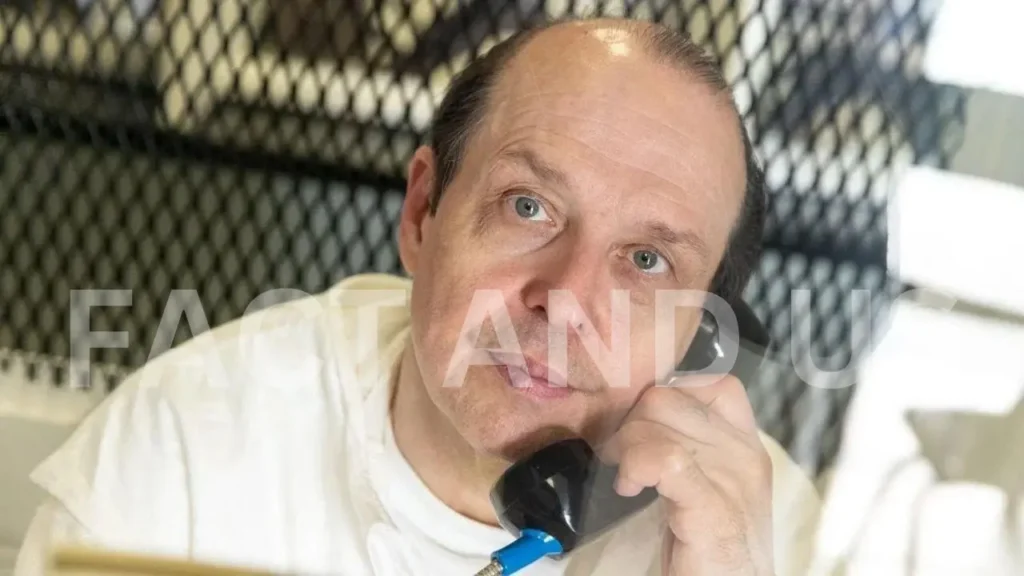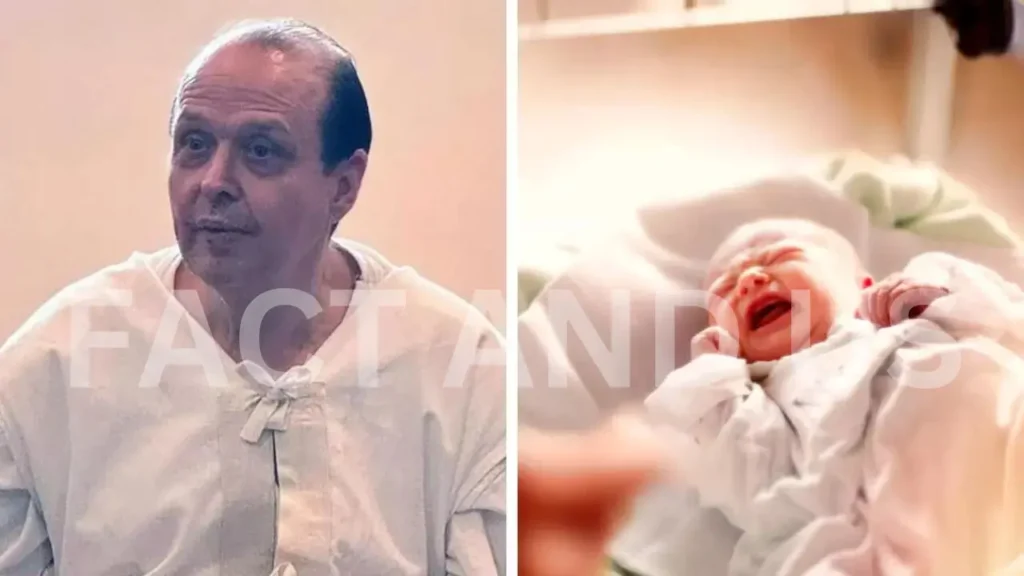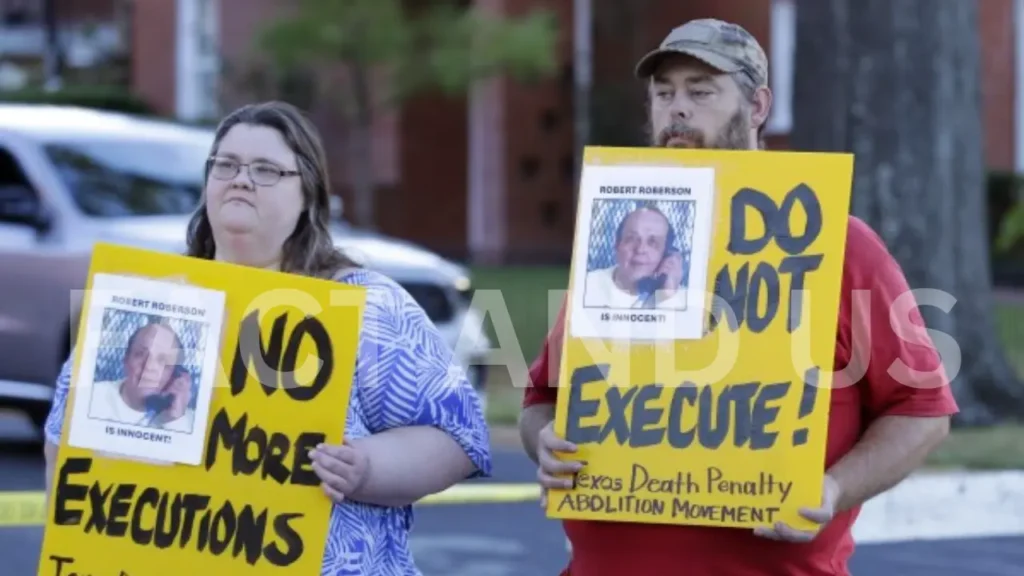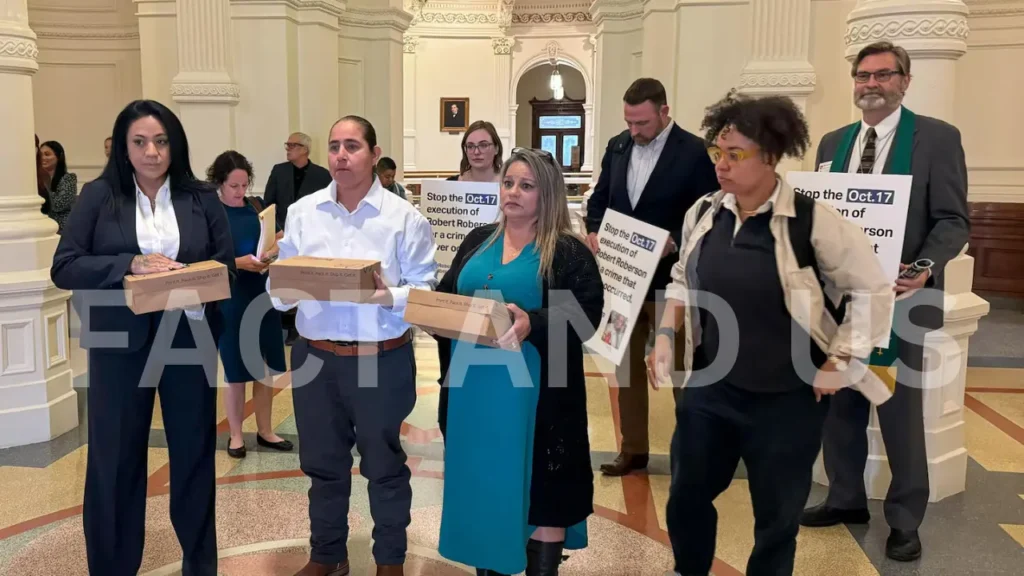Robert Roberson’s long-awaited testimony to any jury is delayed following a dramatic reprieve from death row. For nearly two decades, the Texas man has sat on death row for the death of his daughter in 2002. Roberson was granted reprieve due to new questions about his conviction. The delay marks yet another chapter in a case that has captivated legal observers and stirred ongoing debates about the criminal justice system and the reliability of forensic evidence.

In a stunning chain of events, a man set for execution was granted an eleventh-hour reprieve by Texas’s top court. But he is far from in the clear. Robert Roberson, 57, was set to be the first American ever put to death over murder charges related to what is known as “shaken baby syndrome”. Scheduled to die by lethal injection 17 October, he was spared-for now-by Texas lawmakers and the state Supreme Court.
Either it is going to be a rescheduled execution or an ultra-rare act of clemency in the state which leads the way for capital punishment in the US. Roberson, who has been convicted in the death of his two-year-old daughter Nikki Curtis, had hopes that he would be shown some leniency as he lost multiple appeals in state courts.
On Wednesday, the state’s parole board rejected Roberson’s application for clemency, recommending against commutation of his sentence to life in prison and against reprieve of his execution. Texas Governor Greg Abbott, who can reject the parole board’s recommendation and withhold clemency even when it has been recommended by the board, also refused to grant Roberson clemency. In almost a decade as governor of the state, Abbott has commuted a sentence just one time.
But the same day, in response to calls to spare Roberson’s life, a bipartisan group of lawmakers in the Texas House of Representatives issued a subpoena for him to testify before their panel next week.
The panel plans to question Roberson about his case, including new scientific developments that have questioned key details surrounding his conviction, according to, the US news partner.
Some 90 minutes before Roberson’s scheduled execution last week, the House criminal jurisprudence committee secured a temporary restraining order against the state, forcing it to hit pause on the procedure. Though a divided Texas Court of Criminal Appeals struck down the order, the lawmakers appealed to the Texas Supreme Court, which swiftly halted the execution so Roberson could sit before the House panel Monday.
But that is where his appearance ended, as he did not come to the state capitol in Austin as was expected because the state’s attorney general refused to let him come there for security reasons. The legislature also would not have him come virtually as he suffers from autism and is not familiar with modern technology after spending 20 plus years in prison.
Instead of listening to the convict on Monday, the five Republicans and four Democrats on the committee heard from experts, including Phil McGraw, the television host commonly known as Dr Phil. Mr McGraw spoke about how the state’s junk science law, which lets inmates challenge convictions based on later discredited science, might have affected his case.
He said Roberson did not have due process or a “fair trial”. “There’s no such thing as shaken baby syndrome,” Mr McGraw said, noting there would be “very clear signs” of abuse “that were not present in this case”. Roberson has long maintained his innocence and his attorneys say his daughter was suffering from multiple health issues before her death, including side effects from prescribed medications inappropriate for a toddler and acute pneumonia that had progressed to sepsis.


They claimed that manifestations of undiagnosed until 2018 autism in Roberson were used to attack him in the criminal inquiry.
Contents [hide]
The Case That Grabbed People Attention
Robert Roberson was convicted in 2003 of murdering his two-year-old daughter Nikki Curtis, who was found unconscious in his Palestine, Texas, residence. Prosecutors claimed that Roberson violently shook her causing fatal brain injuries; such a condition is referred to as “shaken baby syndrome.” Roberson has always maintained he did not commit the crime and that his daughter died as the result of an accident.
New medical research does pose questions about the legitimacy of shaken baby syndrome diagnoses, as it points toward medical conditions and accidental trauma as plausible explanations for similar injuries. In pointing out that those newer scientific findings were not considered during the original trial, Roberson’s defence argues that outdated forensic science led to a wrong conviction.

The Reprieve: A Lifeline for Roberson
Roberson, finally, got a temporary lifeline in the event of his death row reprieve that came days before scheduled execution. The Texas Court of Criminal Appeals granted the stay of execution in response to concerns that key evidence in the case may have been misinterpreted. This reprieve is not only a chance for Roberson to avoid execution but also an opportunity for his legal team to present new arguments that could potentially overturn his conviction.
“This is an important step toward justice for Mr. Roberson,” said one of his attorneys. “The scientific understanding of shaken baby syndrome has evolved significantly since his trial, and we believe that if the jury had heard the new evidence, the outcome may have been very different.”
Legal Uncertainty Holds Up Testimony
Roberson was to appear before court to testify on his own account over what happened and to clear whatever shreds of inconsistencies there are in the evidence that led to his conviction. However, the reprieve will delay his testimony since the courts are preparing to hear the case for a possible review. His testimony will most likely seal the fate of his conviction.
According to legal analysts, the passing of time is not unusual in trials of this magnitude, especially when new evidence or breakthroughs in forensic science may be involved. More time will serve to give Roberson’s legal team the opportunity to refine their case and scrutinize more carefully the investigation that originally convicted him.
Questions About Forensic Science

Perhaps the one area of Roberson’s case that has a heavy reliance on forensic science was the “wide acceptance, at the time of trial, of the shaken baby syndrome diagnosis” diagnosed in the infant. In the last two decades, many medical experts have come out to discredit this diagnosis, asserting that symptoms of shaken baby syndrome can also be attributed to a host of other and differing conditions, including undiagnosed medical conditions, infections, and accidental falls.
For Roberson’s defense team, this evolving understanding of forensic science is critical. They argue that the jury in Roberson’s original trial was not presented with the full spectrum of possible explanations for his daughter’s injuries, and that this omission contributed to his wrongful conviction.
“This case highlights the dangers of relying on outdated forensic science in capital cases,” said a legal scholar familiar with the case. “When someone’s life is on the line, it’s crucial that the courts have the most accurate, up-to-date information possible.”
A Long Road Ahead
Still, it is far from being over for Roberson as his defense attorneys have to work on proving to the court that the new medical evidence is compelling enough to change the verdict and deserve a new trial. While the prosecution would argue that the previous verdict should stand because evidence presented during trial was more than enough to prove beyond any reasonable doubt that Roberson committed the crime in question.
For Roberson, the stay brings him hope-but it also prolongs his limbo on death row, “waiting for what he hopes will be the end, either of life in prison or his actual life,” writes Ms. Norris. His case represents some of the issues many others on death row face, specifically those whose convictions rested on forensic science that has come under scrutiny.

The Broader Implications
High-profile appeals like Roberson’s have reopened the debates about the death penalty and forensic evidence reliability in capital case cases. Reforms within criminal justice emphasize an enhanced assessment of convictions of death row inmates, especially given scientific evidence that surfaces long after conviction.
For now, Robert Roberson sits on death row, but his reprieve opened the door to a retrial of the case that can save his life. As these proceedings go on, everyone will turn their attention to the courts in the hopes that they can make fair and rightful decisions in light of the shifting landscape of forensic science and whether justice is finally served.
Conclusion
The delay in the testimony of Robert Roberson, following his commutation from death row, comes on the heels of more than two decades for the case at hand. New medical evidence challenges the original diagnosis of shaken baby syndrome, and Robert Roberson’s legal team is geared up for a fight that may decide the fate of his life. At this point, when the courts review the case, it becomes a test case:
stay connected with fact and us for more such news
